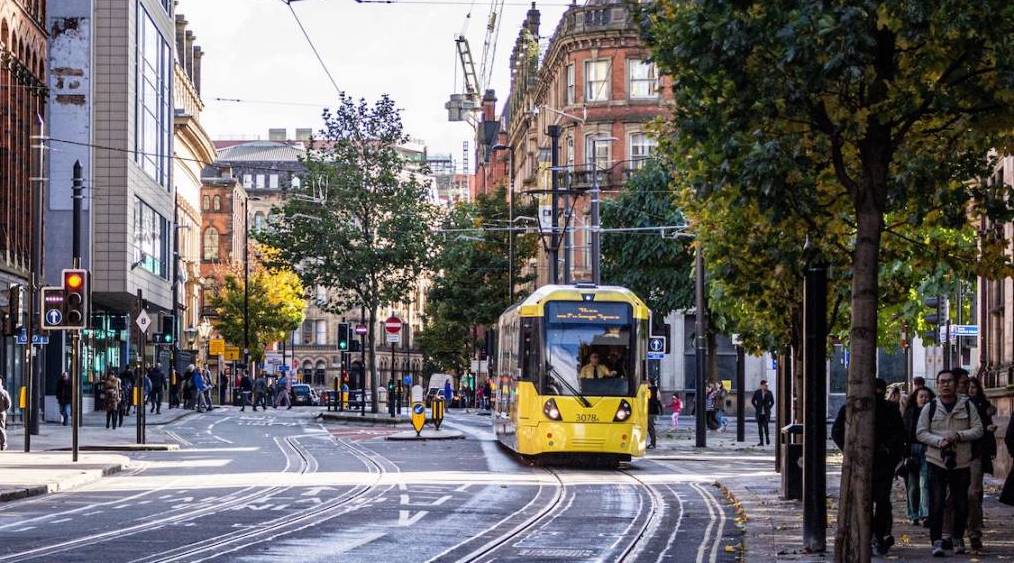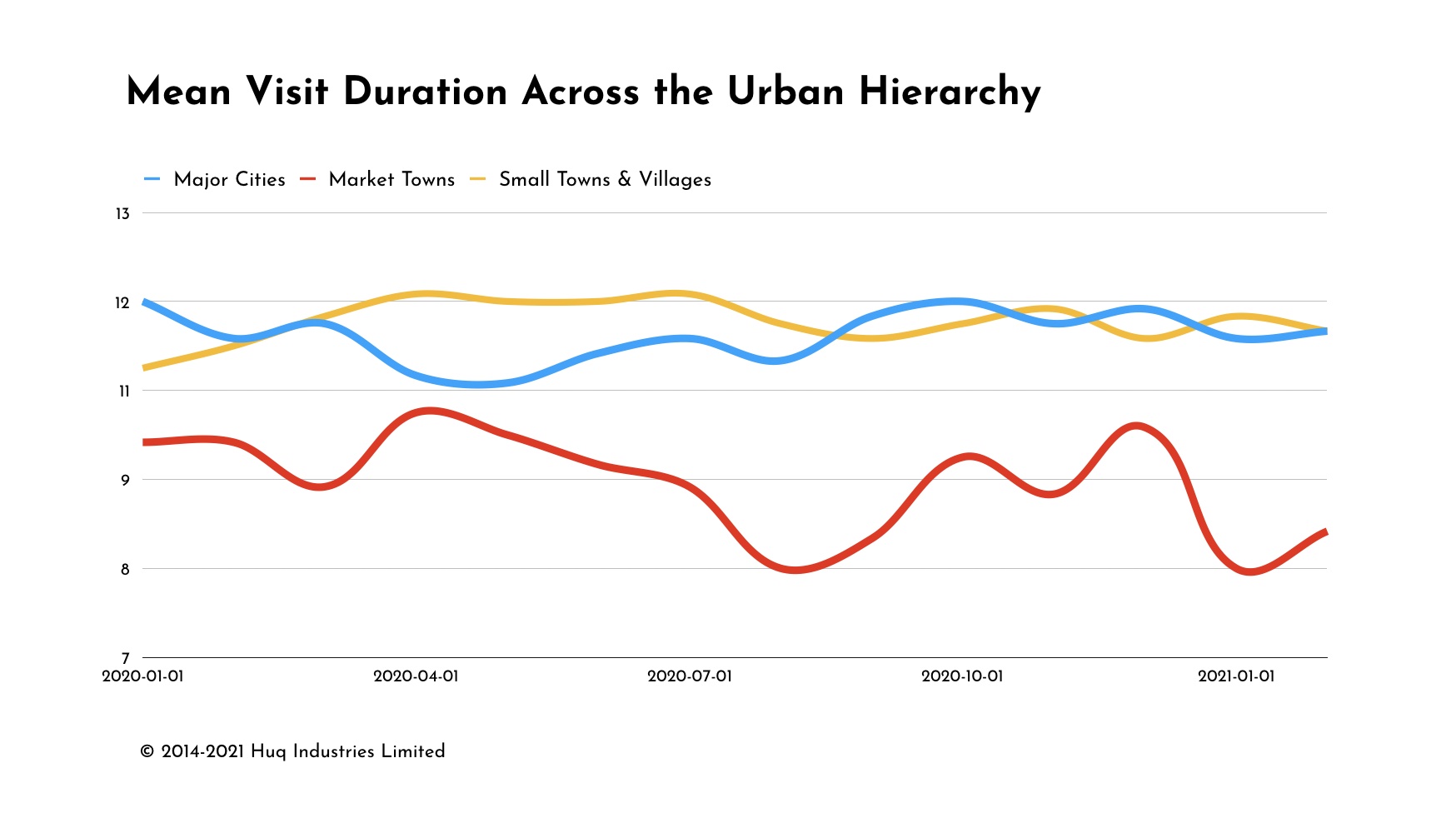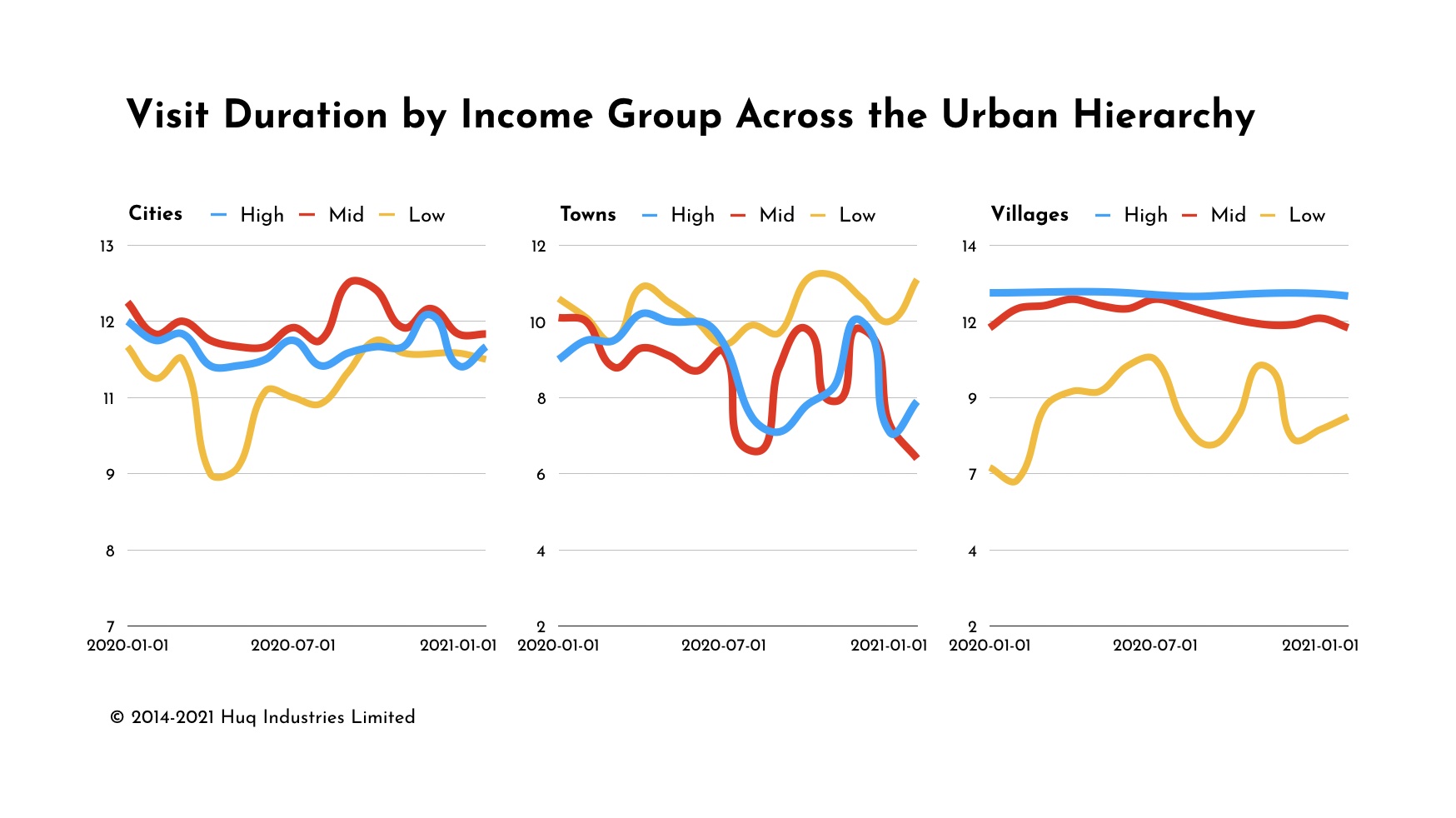
Source: https://huq.io/research/visit-duration-during-covid-19-across-the-urban-hierarchy-and-income-scale/
In previous outputs we have looked extensively at how footfall across UK urban centres has changed in response to Covid-19, and more recently at how catchment areas have undergone similar transformation over the same period. In this analysis we use our mobile geo-location data to explore how dwell time – the duration of visitors to high-streets and town centres – has changed in the past 14 months and contrast those differences by income group.

The chart above shows the average number of hours in a day that visitors were observed in sample of cities, large and smaller towns and villages across the UK – represented at the monthly level since January 2020.
Larger towns and cities show a modest change in response to the first and subsequent lockdowns, with changes in the sub-10% range due to the wider mix of residential and commercial activities sustaining the previous trend. Dwell-time across smaller towns and village centres however shows variance of up to 25%. Rises coinciding with the first and second lockdowns may well reflect the predominantly residential nature of these centres.

These contrasts become more vivid as we explore the equivalent metric by income group, which we are able to inherit from the ONS Local Labour Market Statistics at the MSOA level (Nomis) based on approximate residential location.
Visit duration for high- and mid-earners across major city centres has remained relatively unaffected since Jan 2020 showing a variance of around 5%, while lower-income earners fell by 20% during the first lockdown. This trend is reflected to an even greater extent for villages. Across town centres however this picture is inverted, with visit duration for higher earners falling by as much as 25% over the summer period in particular.
Workplace and residential geography may play a role in these outcomes with costlier accommodation found in city centres and commuting villages, which leads to less observable change when the home and workplace become the same. The opposite may be true of towns, which support their own and also local village populations with routine / staple retail facilities in ways that cities and villages do not, and may also represent employment for local residents.
To learn more about the data behind this article and what Huq has to offer, visit https://huq.io/.







Sign up to receive our stories in your inbox.
Data is changing the speed of business. Investors, Corporations, and Governments are buying new, differentiated data to gain visibility make better decisions. Don't fall behind. Let us help.













Sign up to receive our stories in your inbox.
Data is changing the speed of business. Investors, Corporations, and Governments are buying new, differentiated data to gain visibility make better decisions. Don't fall behind. Let us help.





